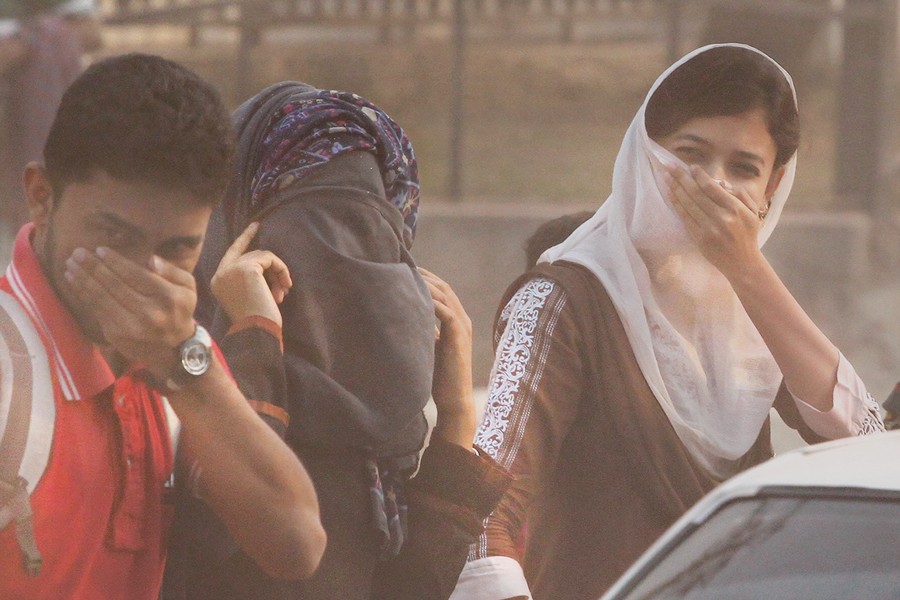Level of particles below a certain size (PM 2.5µg/m3) in mixed and motorised areas was, on average, 182 and 272 per cent higher respectively than that of non-motorised areas, a study showed.
The level already exceeded the maximum recommended limit for 24 hours (65µg/m3) in predominantly mixed and motorised areas in 12 hours, suggesting a much higher pollution potential over a typical 24-hour period in motorised traffic areas. This is recommended in the Environmental Conservation Rules 2010.
Additionally, levels are likely underestimated as other in-depth studies have reported dry season (November to April) PM 2.5 levels being 8-13 times WHO limits.
These were disclosed in a study titled 'Motorisation of Dhaka Transport: Cost & Consequences' under 'Research for Ambient air (PM2.5) pollution in different areas of Dhaka city'. The comparative study was conducted at 12 locations in Dhaka city. WBB-Trust, Institute of Wellbeing, Stamford University, Bangladesh University of Engineering and Technology in collaboration with Global Environment Consultants Ltd (GECL Monitoring Team) conducted the study from 01-08 August this year.
The 12 spots are: B.C. Dash Street Road, Lalbagh, Kobiraj Lane, Patuatuli, Islampur Road, (Vehicle Free), Natun Rasta, Zigatola, Dhanmondi, Dhaka University campus -- in front of Arts Faculty, (Predominantly Non-Motorised Transport), (Predominantly Non-Motorised Transport), Saat Masjid Road -- in front of Rainbow Hospital (Mixed), Nilkhet (Mixed Intersection), Bijoy Nagar Paltan (Mixed), Suhrawardy College gate -- in front of Muktijoddha Tower 1 (100 per cent Motorized Vehicle), Shahbagh Square -- near Police Box area (100 per cent Motorized Intersection), Gulshan-1 (Gol Chattar) (100 per cent Motorized Intersection), Nazrul Islam Avenue, Karwan Bazar (100 per cent Motorized Intersection), Mirpur-10 (Gol Chattar) (100 per cent Motorized Vehicle).
Prof Ahmad Kamruzzaman Majumder, chairman of department of Environmental Science at Stamford University, told the FE that the study was conducted on three types of roads from 6:00 am till 6:00 pm in traffic corridor. Although a major source of air pollution is not known, it is thought that brick kilns and construction works are some of the major sources of air pollution in Dhaka. The study was conducted during the monsoon and there was no construction.
"We have suggested intervention in transport sector and investment for creating opportunity for cycling and walking, rearrangement of the mass transport system," he said.
If the study was done in dry season, the result could have been further serious, he added. Dhaka is going to become next Beijing or Delhi, the 4th and 1st in air pollution.
Particles below a certain size (PM 2.5µg/m3) are thought to be the most relevant for health effects biomass burning, brickfields, industry and vehicles.
Larger particles are generally filtered by the nose and throat by cilia and mucous membranes, smaller particles can penetrate the bronchi and lungs to cause diseases.
WHO reports three million premature air pollution related deaths, disproportionate number coming from low and middle-income countries (88 per cent), particularly South-East Asian and Western Pacific regions.
Strong evidence links air pollution to cancer, cardiovascular disease and respiratory diseases (asthma, chronic obstructive pulmonary disease and bronchitis).


